Boreal birds, balsam fir spires and peat bogs proved an irresistible lure to the Green Mountain Goatsuckers, drawing us back to Vermont’s Northeast Kingdom for our 2018 Birdathon. Following our memorable itinerary from 2016, we concentrated this annual quest on Essex and Orleans counties, again strategically enlisting the Kingdom’s foremost birding guru, Tom Berriman, as our local guide.
The clock began ticking at 5 pm on 20 May, soon after our motley crew of 10 arrived at a rustic Green Mountain Club cabin on Wheeler Pond. Our plan involved birding Orleans County until dusk, rolling out our sleeping bags, then meeting Tom in Lyndonville at 4:30 am the next day. Wheeler Pond proved a solid starting point, with its extensive mixed northern hardwood-conifer forests and shrub-cattail shoreline. We quickly picked up ~20 species, including singing Northern Parula, Blackburnian Warbler, and our only Scarlet Tanager. A Common Loon called from the pond, and a Belted Kingfisher visited its nest cavity in a road-cut bank. Heading north, we were joined by Eric Hanson at Crystal Lake State Park, which produced some good finds, including a Red-breasted Merganser pair, Chimney Swifts, and singing Warbling Vireo, Pine Warbler, and Baltimore Oriole. May Pond and its extensive grasslands produced an immature Bald Eagle, a calling Wilson’s Snipe, Eastern Bluebirds, and singing Savannah Sparrows. On to Orleans, we followed the Barton River north of town. High water levels made for less productive wetland birding than hoped, but we enjoyed great looks at a Solitary Sandpiper and calling American Bittern, whose antics entertained us through a spotting scope. No Pied-billed Grebes, Common Gallinule or Virginia Rails, but no complaints. We ended our evening at Parker Pie in West Glover – a must stop for any pizza lover (and Hill Farmstead beer connoisseur) visiting the NEK.
Back at Wheeler Pond, a Barred Owl called stridently before we turned in for the night, facing a 3:30 am wake-up call. Cell phone alarms roused us mere hours later, with the thermometer at 37 degrees F and Karen masterfully brewing a double batch of strong coffee outside in the emerging dawn. Caffeine and Eric’s homemade sticky buns fueled our 30-minute drive to Lyndonville, where we met Tom. As in 2016, we bee-lined straight to an abandoned railroad bed near Miles Pond in North Concord. Here we were treated to a rich dawn chorus, with an unusual mix of “southern” and “northern” birds. Singing Wood Thrushes, Veeries and Black-throated Blue Warblers provided counterpoint to an assortment of Northern Waterthrushes, Nashville-Magnolia-Canada warblers, and the day’s only Tennessee, Bay-breasted and Mourning warblers. We left with nearly 75 species under our belt, a fine start.
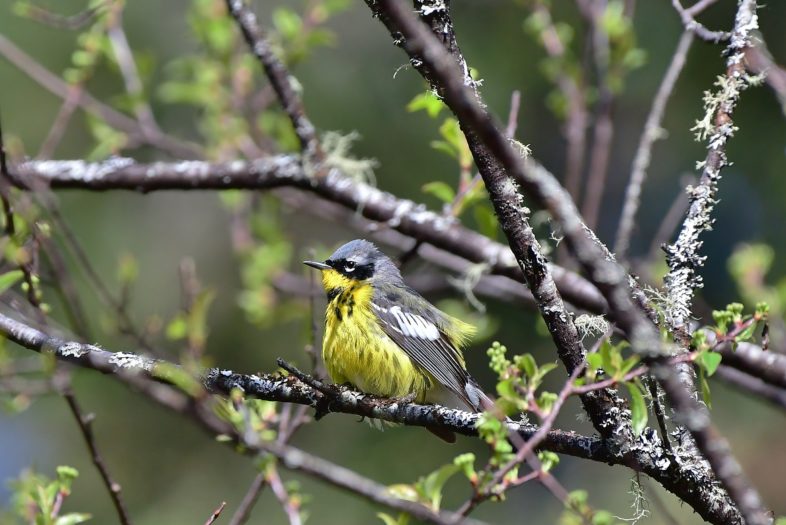
One of many male Magnolia Warblers that highlighted Birdathon 2018 for the Green Mountain Goatsuckers. Photo courtesy of Tom Berriman.
Next on our itinerary was Victory Bog, where we racked up key species along the road and at Damon’s Crossing. Most surprising was a Brown Thrasher foraging in a small grassy clearing. Prolonged views of a male Northern Harrier in flight elicited oohs and aahs. A flock of 5 White-winged Crossbills burst from a roadside tree. Key finds included Alder, Yellow-bellied and Olive-sided flycatchers, the latter giving its signature “quick-three-beers” refrain. A singing (Yellow) Palm Warbler afforded a terrific view, our only encounter with this bog-nesting specialist. As full sun nudged temperatures upwards, a stiffening wind kept black flies mostly at bay. A single Pine Siskin called overhead, and every one of our many Magnolia Warblers proved a show-stopper.
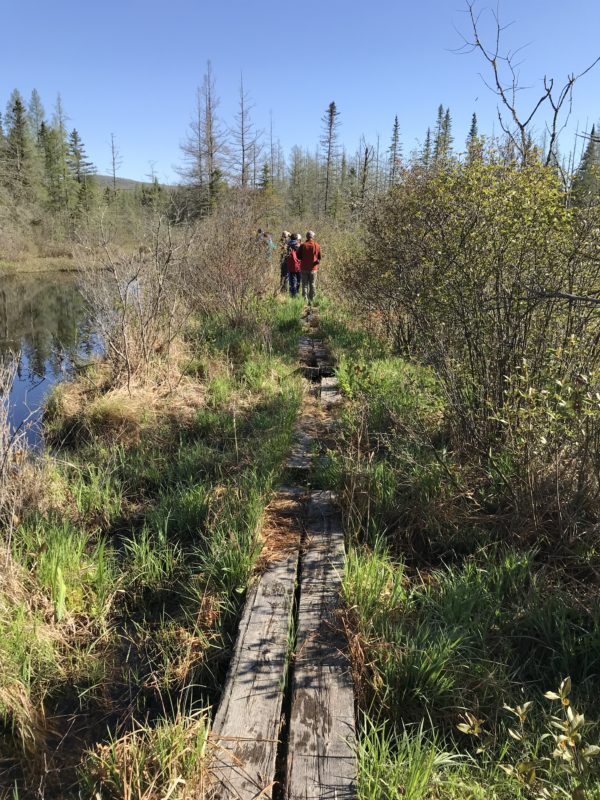
One of the day’s most scenic and tranquil birding spots, the boardwalk at Damon’s Crossing in Victory Bog; Yellow-bellied Flycatchers and Palm Warblers sang close by.
From Victory, with 95 species tallied, we slogged over to Route 102 along the Connecticut River. Our first stop in Guildhall yielded a bona fide Canada-bound migrant – Greater Yellowlegs – but not the Willow Flycatcher we had found there two years earlier. We fruitlessly searched farm fields for Red-tailed Hawk, American Kestrel, or Killdeer, and the >50-burrow Bank Swallow colony in a Brunswick gravel pit was deserted. Arriving at Moose Bog at shortly after noon, temperatures in the low 70sF under bright sun, we gratefully took a break for lunch, hopes still alive for the “boreal grand slam,” but knowing we were pushing our luck.
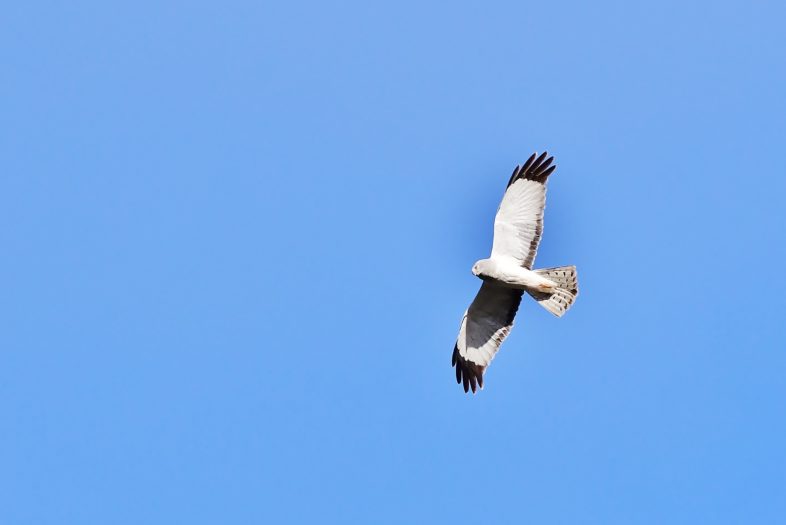
Prolonged looks at this male Northern Harrier provided a Birdathon highlight. Photo courtesy of Tom Berriman.
Venturing into the cool spruce-fir forest, we walked leisurely along the main Moose Bog trail, where Tom often sees male Spruce Grouse performing on their mating “leks.” We were a week or more past peak courtship and never spied a bird. Gray Jays and Boreal Chickadees eluded us, but we had a fly-by of a Black-backed Woodpecker on the new boardwalk, also adding American Black Duck on the pond, Ruby-crowned Kinglet and Dark-eyed Junco (phew!) in the forest. Our list stood at a respectable 102 species as we headed back to Lyndonville, bleary-eyed but thoroughly exhilarated from spending 24 hours in a region that is arguably Vermont’s most pristine and ecologically distinctive. Near-constant banter, light-hearted humor, and solid camaraderie only heightened our sense of fun and fulfillment.
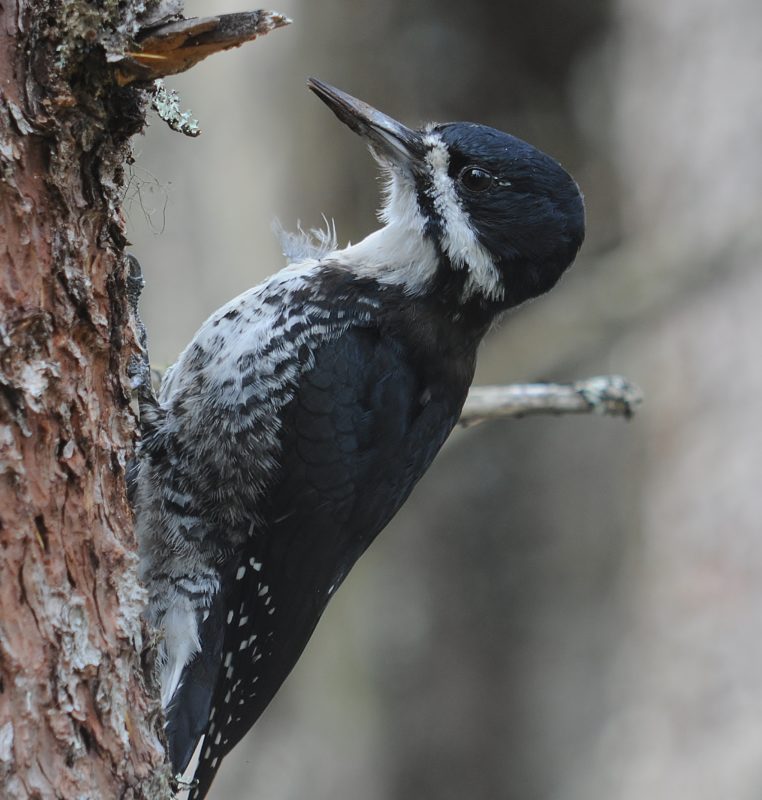
The Goatsuckers didn’t manage this kind of look at a Black-backed Woodpecker, but the species did make a fleeting appearance for us at Moose Bog. Photo courtesy of Tom Berriman.
Well… it turns out we weren’t quite done birding. Our final stop along Island Pond’s sandy south beach revealed a small whitish bird perched on a buoy far from shore, buffeted by whitecaps. Its brief flight removed any doubt that we were watching a tern, but what species? Common? Arctic? Forster’s?? We angled around to the west shore, where our scopes confirmed it as a Common, Tom’s first-ever tern of any species in Essex County. Nothing like an avian surprise to wrap up a memorable day, and this concluding “tern” (sorry…) of good fortune boosted our final tally to 103.
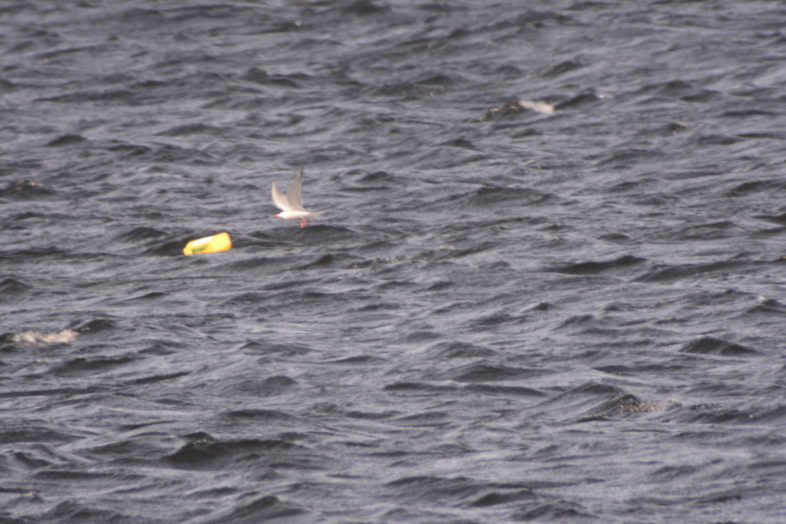
Tom Berriman’s digiscoped image of the first-ever Common Tern recorded in Essex County, the Goatsucker’s final new species for Birdathon 2018.
BIRDATHON RESULTS
See the full list of species found by the Green Mountain Goatsuckers during Birdathon 2018.
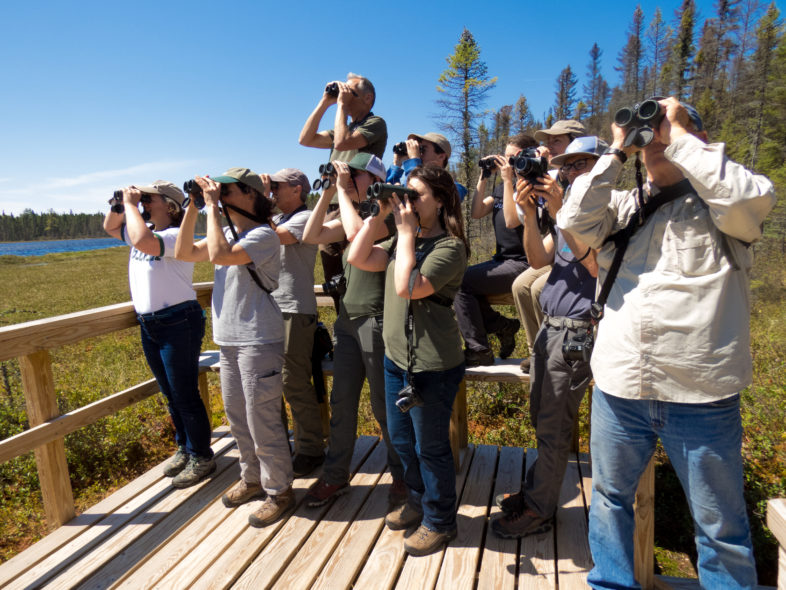
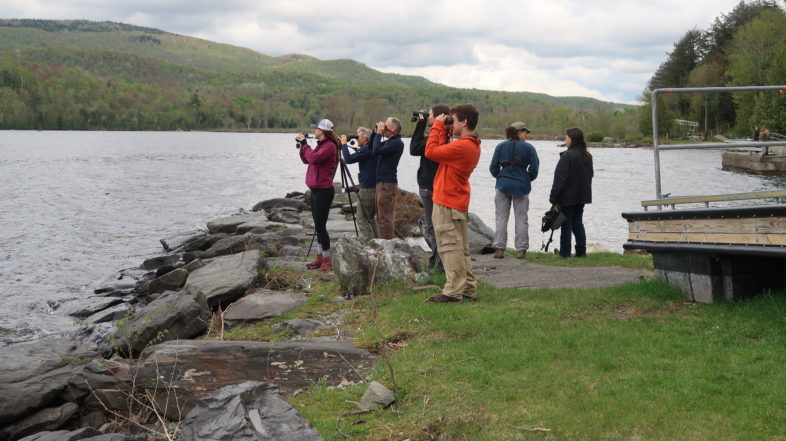

Hurrah for a great day and write up!! Thanks for sharing. I’m envious.